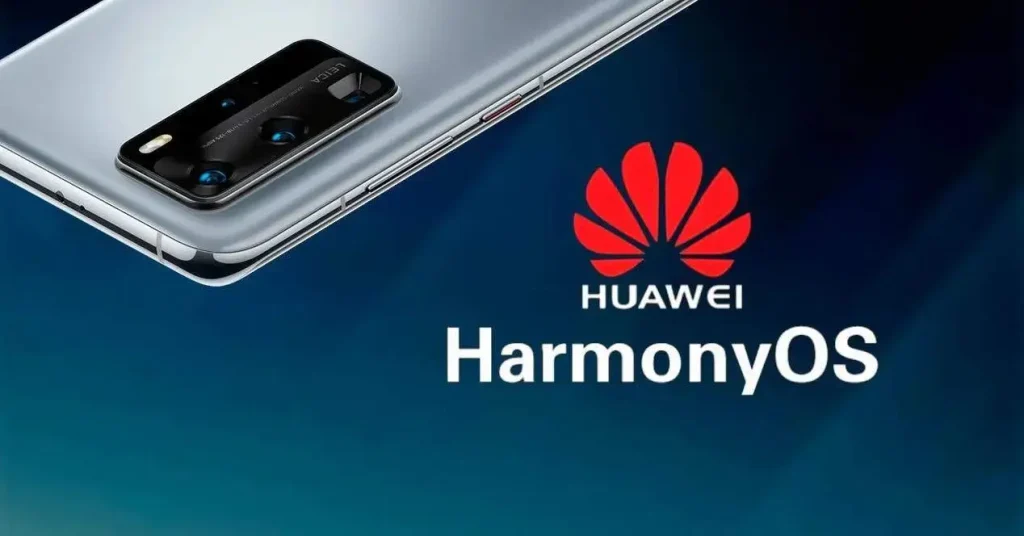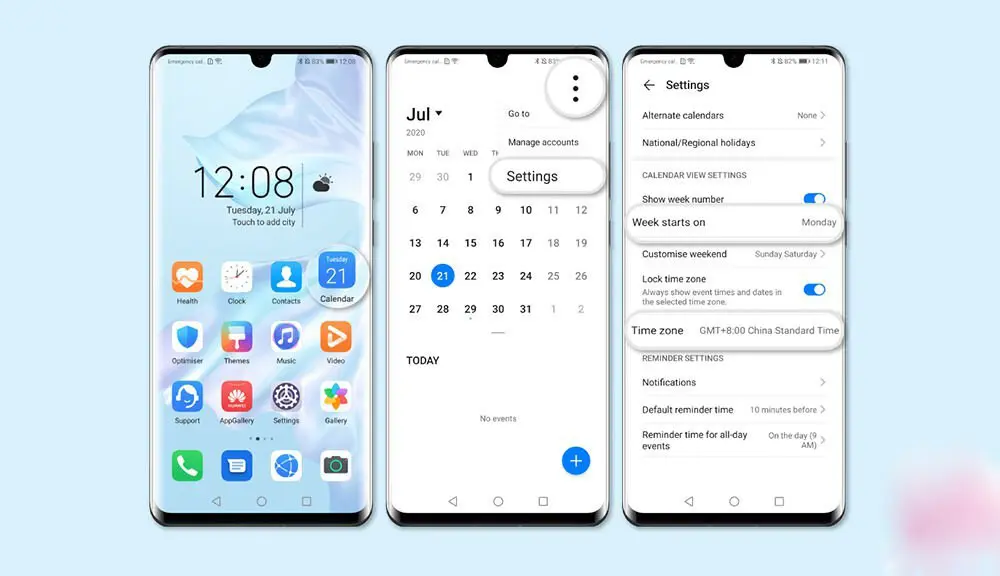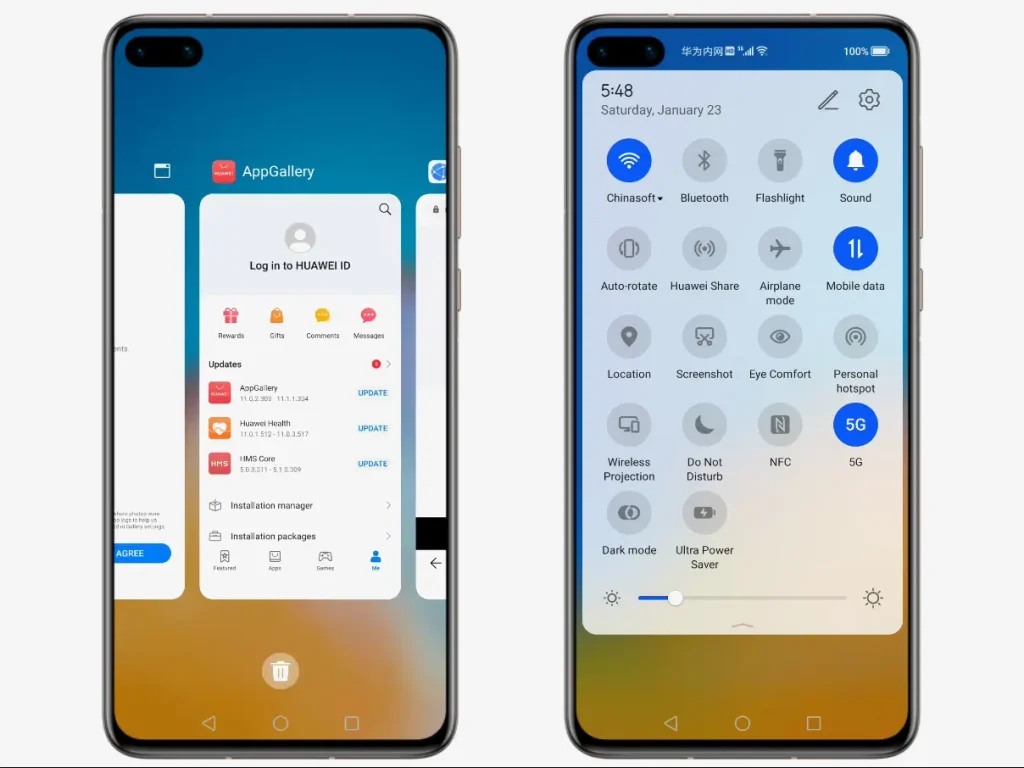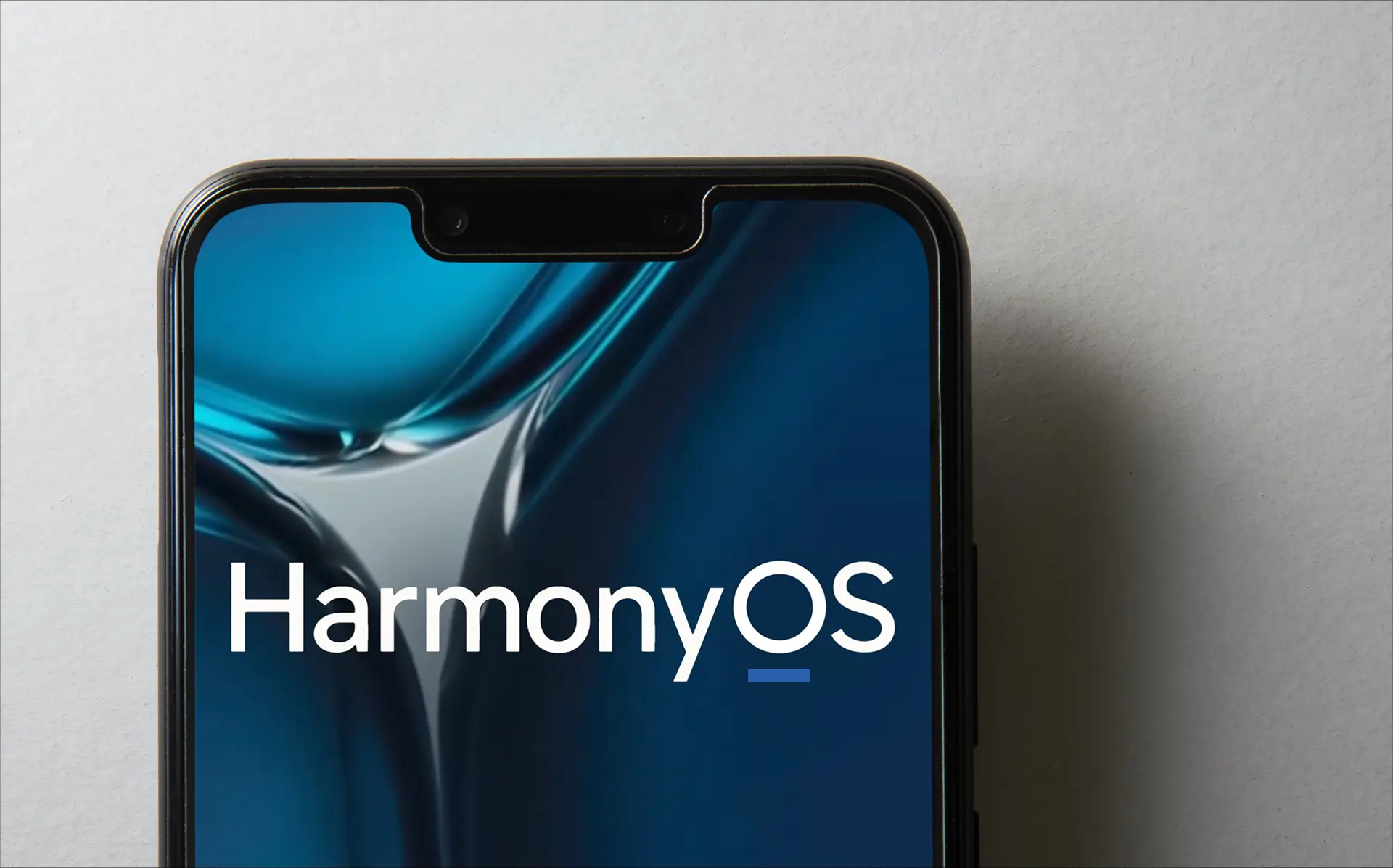With the new operating system HarmonyOS Next, Huawei plans to create a completely different ecosystem and compete directly with Android and iOS.
In 2019, US sanctions barred Huawei from using Android in its devices, and the Shenzhen-based tech company entered a deep existential crisis. Now, after 5 years, the tech giant may have come close to succeeding where Microsoft, Samsung, and Alibaba failed; With the release of the third version of the phone operating system called HarmonyOS Next to compete directly with iOS and Android.

Before Huawei, other tech giants had tried to create operating systems to compete with Android and iOS. Some of these efforts include Microsoft’s Windows Phone in partnership with Nokia, Samsung’s Tizen in partnership with Intel, and Alibaba’s YunOS. All of these operating systems ultimately failed due to the challenges and huge financial burdens of building and maintaining a new operating system in a market dominated by two big players.
Zhang Jianfeng, Alibaba’s former chief technology officer, said: “Even for a tech giant like Alibaba, investing in an entire team to develop a new operating system is prohibitively expensive. “These costs are an obstacle for the success of newcomers.”
Now we can understand why the development of HarmonyOS was a forced move under the pressure of sanctions; But Huawei, which sees its life in the success of its operating system, has no choice but to pay. Ren Gelin, head of Huawei’s OpenHarmony project management committee, said in an interview with Kaichen: “The basic salary level of Harmony OS developers is 30-50% higher than that of Android developers.”

The development of Harmony OS, known as “Hongmeng” in Chinese, began in early 2015. The operating system was originally intended for IoT applications such as self-driving cars and industrial automation, but sanctions forced Huawei to give up and release an early version of HarmonyOS in just four months. This operating system, like Android, was built on the open source Linux platform.
Huawei is now in a position where it has achieved relative independence in the production of chips, operating systems and applications, and is benefiting from the commercialization of its products. Today, this technology giant is facing a completely different perspective compared to previous years. The relative success of Huawei’s Mate 60 series with the Chinese Crane processor created a solid foundation for the launch of the company’s new operating system. The Mate 60 series sold nearly 1.5 million units in the first month of its release, which is a great number.
In the first 6 weeks of 2024, Huawei’s smartphone sales in China increased by 64% compared to the same period last year, and data from the market research institute Counterpoint shows that its market share has increased to 16.5%, and only Vivo is higher than that. “Huawei’s good sales are mainly due to the Mate 60 series, boosted by brand loyalty and the successful Harmony OS move,” said Evan Lam, senior analyst at Counterpoint, in an interview with Kaixin.

Huawei had announced the peak of the success of HarmonyOS to reach a 16% share of the Chinese market and believed that this share would convince developers and produce specific applications for this operating system. The Chinese tech giant achieved its goal in the fourth quarter of 2023, in which 16 percent of smartphones sold in China used Harmony OS. Huawei is now getting closer to Apple’s 20% market share in China. According to Counterpoint, HarmonyOS has approximately 4% of the world’s mobile operating system market; While the share of iOS and Android reaches 23 and 74 percent, respectively.
Last December, Huawei unveiled the latest version of its operating system called “HarmonyOS Next”, which shows the company’s serious determination to build a self-sufficient ecosystem for mobile applications. The competition in the market of mobile operating systems will intensify with the introduction of HarmonyOS Next. Unlike previous versions of Harmony that relied heavily on Android native code, HarmonyOS Next is written based on a completely independent microkernel architecture.
With its new operating system, Huawei intends to create a distinct ecosystem that can directly compete with Android and iOS. In the rest of this article, we will explore the key differences between HarmonyOS Next and Android in terms of system architecture, app ecosystem, open source, performance, and future potential of this platform.
The difference between HarmonyOS Next and Android
System architecture
System architecture forms the backbone of the operating system and affects its performance, stability, and scalability. Android is built on the Linux kernel and uses an integrated architecture; That is, essential modules such as memory management, device drivers, and network support are all built into the kernel. This structure makes Android powerful and versatile, but it also increases the possibility of system failure, because if only one module fails, it can affect the stability of the entire system. In addition, its reliance on Linux and the Android Open Source Project (AOSP) allows developers to create their own custom ROMs, which on the one hand increases system flexibility and on the other hand compresses resources.
On the other side of the field, with HarmonyOS, Huawei has introduced an advanced microkernel architecture and freed itself from any dependence on Linux or the Android open source project. Unlike Android’s integrated structure, HarmonyOS Next’s microkernel is very lightweight and includes only essential functions such as task management and memory allocation. This design improves performance and security, as problems in non-core modules will no longer affect the entire system. The microkernel architecture also enhances collaboration between devices and their seamless integration into smartphones, tablets, wearables, and smart home appliances.

The ecosystem of programs
With more than 3 million applications in the Google Play store, Android uses the largest ecosystem of applications in the world, and with the support of a huge community of developers, it is widely compatible with various applications and provides users with numerous options. The Android ecosystem has expanded to various devices including smartphones, tablets, televisions, and wearables, and many developers are busy creating applications for each of these devices.
On the other hand, HarmonyOS Next focuses on creating a completely native app ecosystem and moves away from Android. Unlike previous versions of Harmony, HarmonyOS Next no longer supports Android apps, forcing developers to create their own apps for this operating system using the RTS programming language.
HarmonyOS Next currently has fewer apps than Android with only 15,000 dedicated apps, but Huawei has tried to cover the diverse services needed by users with this limited number of apps. To attract more developers, the Chinese tech giant offers tools such as Ark Compiler that enable the creation of efficient applications.
Huawei is establishing itself as a major player in the future operating system landscape by creating applications specific to its operating system and nurturing a new generation of skilled programmers on its platform. Since 2021, this technology giant has been cooperating with domestic universities in China to train its programmers. 3 years ago, Wuhan University was the first university in China to include HarmonyOS mobile application development courses in its students’ curriculum. In the first semester, 30 students from the fields of computer science, software engineering and information management participated in this course.
Earlier, Huawei signed an agreement for joint training of graduate students with Shanghai Jiaotong University. This two and a half year program accepts 30 students annually. The first group of these students graduated in early 2024. Xia Yubin, the vice-chancellor of the university’s software faculty, emphasized the lack of domestic specialists in the field of operating system, and noted that the skills of this group of students will not be limited to the development of the operating system, but will soon play a role in chip design and other fields of technology. payment
The development of Huawei’s ecosystem can have a great impact on the further prosperity of China’s technology industry. The company has estimated that app development for HarmonyOS will create at least three million jobs. Currently, more than 380,000 programmers have succeeded in obtaining HarmonyOS certification. Huawei is committed to training 100,000 app developers per month through online videos and other tools.
In an interview with Caichin, some app developers stated that due to the average to high income of Huawei phone users and their higher willingness to pay in-app compared to other users, developers have become more interested in producing apps based on Harmony OS Next.
Gong Ti, head of software in Huawei’s consumer business group, outlined the company’s two-pronged strategy to strengthen Harmony OS’s competitive position. The first aspect is to focus on more than 5,000 applications that 99% of the time users spend using their smartphones during the day. Gong believes that reaching this point is very important for HarmonyOS to attract the attention of users and create a comprehensive software ecosystem. The second aspect is to increase the coverage of the operating system to 500,000 applications so that it can meet a wide range of demands and specialized needs of consumers.
Since the summer of last year, Huawei has been pushing major domestic companies to develop their own apps for HarmonyOS as well. By the end of 2023, companies such as video platform Bilibili, digital payment app Alipay, and game developers NetEase and miHoYo have announced that they have reached an agreement with Huawei to produce a version based on HarmonyOS Next.
Although important applications such as Tencent’s WeChat and ByteDance’s Devine (the owner of TikTok) have not yet joined this arena, more than 200 major companies related to travel, navigation, finance, social media, productivity tools, entertainment and gaming have developed their applications for Harmonyos have presented. Tencent has released only two apps QQ Music and QQ Reading for HarmonyOS and is negotiating with Huawei to add more apps.
On the flip side, several small developers, including some game makers, have told Caichin that they have no plans to release their apps to HarmonyOS in the near future. The manager of one of these small game producing companies announced the reason for his decision due to the restrictions imposed by the application stores and the appropriation of half of the revenue from the games.
This business model has encouraged small and medium-sized game developers to market their apps through social media and popular payment platforms such as WeChat, Devin, Quaysho, and Alipay. These platforms allow users to directly experience the games and bypass the process of downloading and registering in the store. This will be the best way for small developers to reach their audience at an affordable cost.
Harmony ecosystem is more closed
Android is known for its open source nature, allowing its developers to freely modify the operating system. Being open source has resulted in the production of a large library of applications, wide compatibility with different devices and providing extensive customization options for users. However, on the other hand, it can lead to an increased likelihood of security vulnerabilities and different experiences from person to person, as manufacturers customize the operating system in different ways.
HarmonyOS Next takes a more closed approach and Huawei has considerable control over it. This ensures higher system stability, more security, and faster updates, although it may have a smaller app ecosystem compared to Android. The packaged nature of HarmonyOS Next reduces the level of user customization and developer freedom compared to Android, but provides a more secure and consistent user experience.
Performance and efficiency
Android is optimized for a wide range of devices, from low-end models to high-end models. However, hardware lagging and bottlenecking can be seen especially in low-end devices. This operating system requires extensive hardware support and runs many processes in the background, which can negatively affect battery life and overall device speed.
On the flip side, several small developers, including some game makers, have told Caichin that they have no plans to release their apps to HarmonyOS in the near future. The manager of one of these small game producing companies announced the reason for his decision due to the restrictions imposed by the application stores and the appropriation of half of the revenue from the games.
This business model has encouraged small and medium-sized game developers to market their apps through social media and popular payment platforms such as WeChat, Devin, Quaysho, and Alipay. These platforms allow users to directly experience the games and bypass the process of downloading and registering in the store. This will be the best way for small developers to reach their audience at an affordable cost.
Expansion of the ecosystem and development in the future
Although both operating systems aim to create a unified ecosystem that extends to devices beyond the smartphone, their strategies differ. Android continues to dominate the smartphone market and is expanding its dominance in areas such as the Internet of Things, automobiles, and wearables. Google has also invested heavily in artificial intelligence to enhance the capabilities of its operating system and make it compatible with different hardware.
On the other side of the field stands Huawei, which has an ambitious vision of a cross-device operating system with HarmonyOS Next; An operating system that provides an integrated experience in sectors such as consumer electronics, industrial automation, transportation and intelligent energy management.
Huawei’s ecosystem strategy is based on deep integration with artificial intelligence through the Xiaoyi assistant, extensive collaboration between devices, and focusing on building a smart life. By focusing on devices, Huawei plans to establish HarmonyOS Next as a major player in the Internet of Things era.
